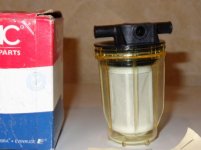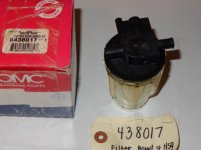TrickyRicky
Member
Moved my fuel tank to the bow. Used a 3/8 ID copper fuel line to back of boat. Flex hose and primer bulb from tank to copper. Back of boat copper stub out to flex hose. Flex hose to clear water seperating filter (clear plastic bowl with silk screen filter housing). Flex hose from filter to outboard. When I run the engine, starting with a full fuel filter, after sev mins the fuel filter level drops to about 1/3. Now inside the silk screen fuel appears to be to the top. I can see the fuel entering inside the filter while running. I tried it at the lake and the fuel level never seemed to get any lower even at full rpm. I am 100% sure no leaks air intrusion. Should I install an electric pump and remove the OEM pump? Or just run as is? I know what will happen when it leans out.



